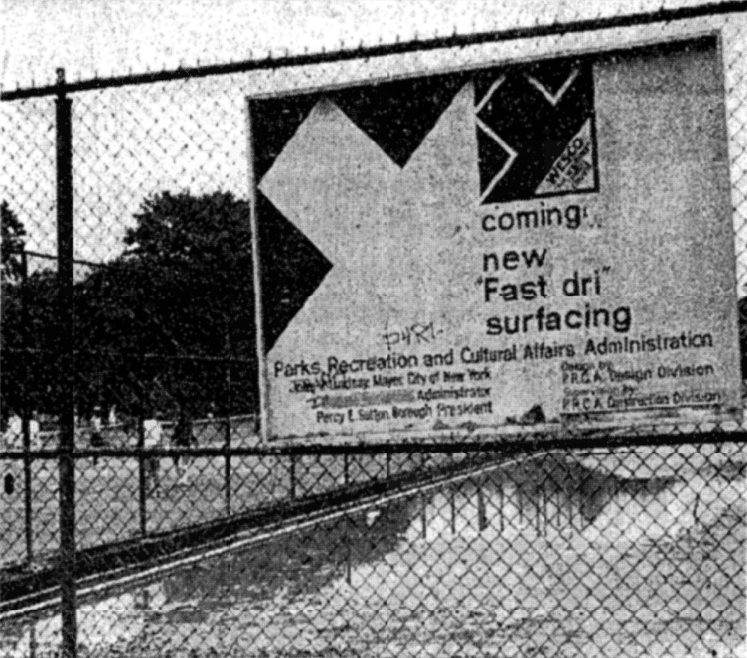In late June 1973, a group of 75 irate citizens demonstrated in Manhattan’s Central Park. They weren’t protesting inflation, energy shortages, or crime–though during the rally, a young woman was mugged nearby.
No, the fuming New Yorkers had something else in mind. They wanted their tennis courts back.
New York City boasted 522 public tennis courts throughout the five boroughs. Anyone who wanted to play could sign up for court time all summer long with nothing more than a $15 annual pass, long one of the best deals in Gotham. Central Park’s 30 courts were the most popular of all. Hundreds of regulars knew to show up long before the 8 A.M. weekend opening if they wanted to play before noon. The rule was first-come, first-served, though rumor had it that you could jump the queue by bribing an attendant.
When the season opened in April 1973, 13 of the Central Park courts were out of commission. A resurfacing job, begun the previous August, dragged on and on. The cause differed depending on who you asked: Unexpected complications, micro-managing city officials, foot-dragging contractors, or uncooperative weather. The City had responded to increased interest by putting up bubbles for the first time in the winter of 1972-73. When the weather turned nice, though, the logjam on the Upper West Side remained.
All this, at the peak of the “Tennis Boom,” the moment when the sport reached a new pinnacle of public awareness and everyone suddenly wanted to play. The surge was so dramatic that by the end of the year, tennis ball manufacturers could barely keep pace with demand.
The Boom is sometimes dated to the Billie Jean King–Bobby Riggs match in September, and the publicity surrounding the Battle of the Sexes certainly helped. But King-Riggs was an effect of the Boom as much as it was a cause. The Open Era unleashed a small army of promoters on the game. Newspapers covered players and tournaments like never before. The excitement reached a peak in May 1972, when Rod Laver and Ken Rosewall–two undersized Aussies who could have been mistaken for accountants–battled for five sets on national television in the World Championship Tennis Finals.
The match was thrilling, and what’s more, Laver and Rosewall made the game look like something you, too, could enjoy.
Tennis also seemed to fit the zeitgeist. Mike Lupica, then a 21-year-old senior at Boston College contemplating a career in sports journalism, wrote:
It is a sport whose pace matches the pace of our life style–fast, faster, and blur. Even the best of three-set matches take only 90 minutes. Yet, what a 90 minutes! In the course of one hour and a half, with the grim single-mindedness that is written on the faces of the participants, tennis provides enough physical exertion to last a week, and also provides ample opportunity to work off the minute-by-minute frustrations which pierce our lives.
Alas, many would-be Boomers in midtown Manhattan remained flummoxed by delays. By early June, weekend hackers were coming to blows over court time. A few weeks later came the demonstration. There was even talk of a players’ association.
Finally, on August 1st, the 13 courts reopened. Parks Administrator Richard Clurman tried to focus on the positive: The new Har-Tru surface dried faster and would create more playing opportunities.
Reviews were generally positive. But these were New Yorkers, after all. At 7:45 A.M., two regulars started quarreling over who had first dibs on one of the new courts. They kept at it for a solid 15 minutes before one finally gave way. A block of fresh courts could fix a lot of problems, but it couldn’t solve them all.
* * *
This post is part of my series about the 1973 season, Battles, Boycotts, and Breakouts. Keep up with the project by checking the TennisAbstract.com front page, which shows an up-to-date Table of Contents after I post each installment.
You can also subscribe to the blog to receive each new post by email:
